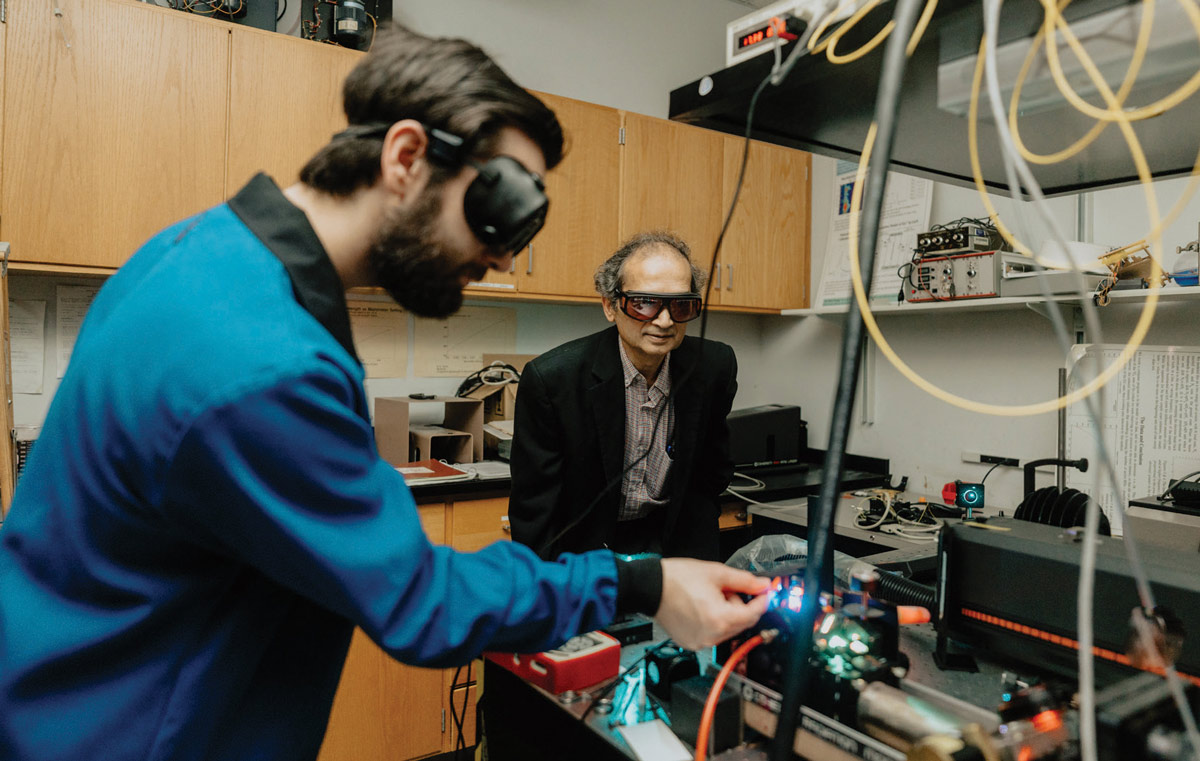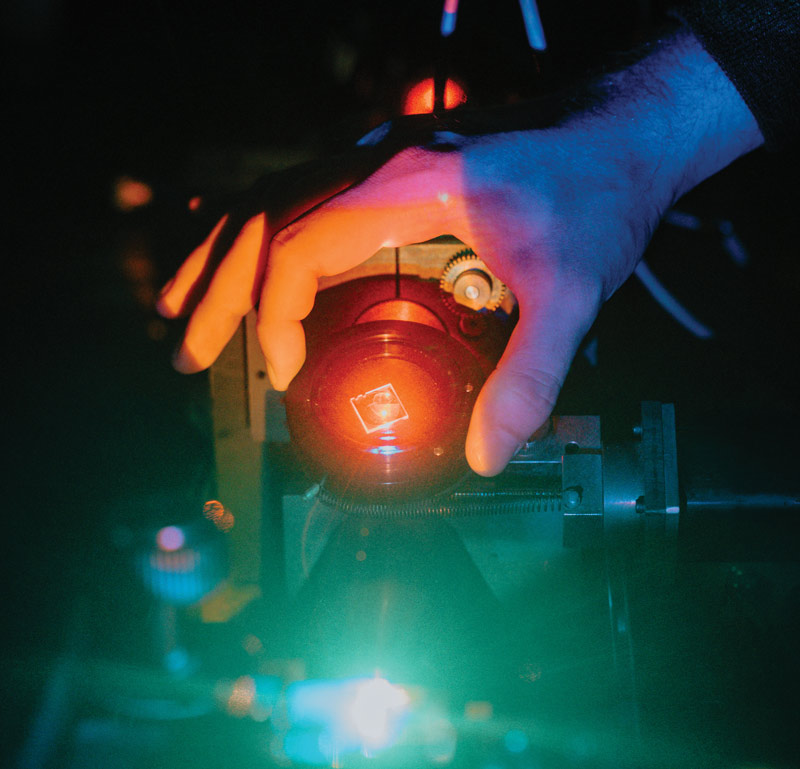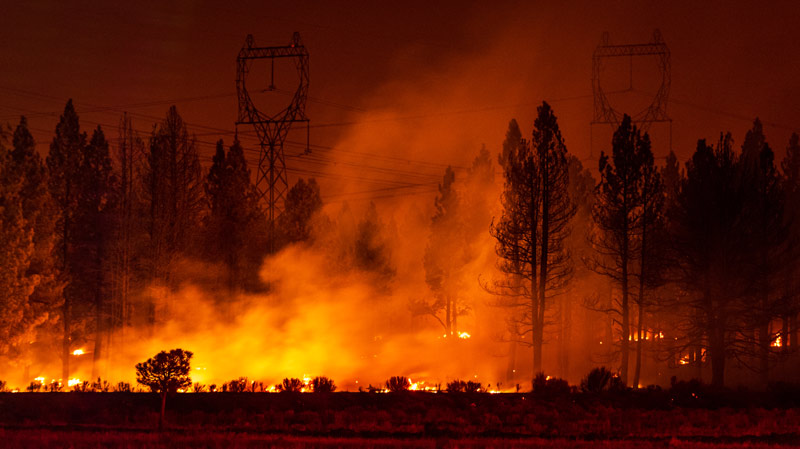
In taking on the world’s greatest challenges, there’s strength, as the saying goes, in numbers.
Since their founding in 2018, Lehigh’s three Interdisciplinary Research Institutes (IRIs) have grown to encompass more than 50 active research teams, over 150 faculty from across all five of Lehigh’s colleges, countless graduate students, and a wide variety of external partners in industry, government, and academia.
The Institutes for Functional Materials and Devices (I-FMD); Data, Intelligent Systems, and Computation (I-DISC); and Cyber Physical Infrastructure and Energy (I-CPIE) were designed to catalyze crucial research in areas in which the university could take a leading position and make lasting societal contributions, says Steve DeWeerth, dean of the Rossin College.
 “The IRIs were created to be research center incubators through the support of ideas, teams, and proposals,” says DeWeerth, who oversaw their planning and launch not long after joining Lehigh in 2016, having previously served as associate dean for research and innovation at the Georgia Tech College of Engineering. “By fostering a culture of interdisciplinary teaming through faculty engagement in shared experiences such as workshops and seminars, the IRIs create an environment where communities of scholars convene and coalesce around grand challenges. The goal for the IRIs has always been to incubate innovative ideas, enabling them to grow and gather the academic strength necessary to compete for and win extramural funding opportunities.”
“The IRIs were created to be research center incubators through the support of ideas, teams, and proposals,” says DeWeerth, who oversaw their planning and launch not long after joining Lehigh in 2016, having previously served as associate dean for research and innovation at the Georgia Tech College of Engineering. “By fostering a culture of interdisciplinary teaming through faculty engagement in shared experiences such as workshops and seminars, the IRIs create an environment where communities of scholars convene and coalesce around grand challenges. The goal for the IRIs has always been to incubate innovative ideas, enabling them to grow and gather the academic strength necessary to compete for and win extramural funding opportunities.”
The IRIs have indeed been a crucial part of efforts to develop successful interdisciplinary team-based proposals.
In 2021, the U.S. Department of Energy awarded the Atlantic Marine Energy Center (AMEC), a partnership between Lehigh and three other East Coast universities, $9.7 million to focus on research and development in sustainable renewable ocean energy. More recently, AMEC received an additional $12 million from the Department of Energy as an investment into the National Marine Energy Centers under the Bipartisan Infrastructure Law. This funding further increases the scope of AMEC’s work and draws 10 Lehigh faculty into the center’s efforts.
And in December, the National Science Foundation granted Lehigh a four-year, $6 million award through its Accelerating Research Translation (ART) program to “increase the scale and pace of advancing academic research into solutions that benefit and serve the public.” The 16-member Lehigh team represents all five Lehigh colleges.
Each of these successful initiatives trace their roots back to the IRIs.
Turning ideas into thriving research centers
The IRIs’ success as innovation incubators is reflected in new university commitments to supporting impactful research. As part of its institutional strategy, Inspiring the Future Makers, Lehigh is launching University Research Centers, or URCs, consisting of focused teams in selected high-impact research fields. Through this investment, Lehigh seeks to propel these teams to compete successfully for external large-scale funding.
“The idea for the University Research Centers is to identify something that we are fairly good at already, in which, with the right investment, we can become world leaders,” says Anand Jagota, Lehigh’s vice provost for research.
The ultimate vision, says Jagota, who is also professor and founding chair of the Department of Bioengineering, “is to identify a societal problem and build a team including Lehigh and other partners to solve that problem.”
The first wave of the URCs was announced earlier this year, with strong ties to the IRIs.
 Building resilient communities
Building resilient communities
The Center for Catastrophe Modeling and Resilience, which is affiliated with I-DISC and led by Paolo Bocchini, a professor of civil and environmental engineering, is Lehigh’s inaugural University Research Center. It brings together a team of faculty from across disciplines, leveraging a wealth of experience and expertise in their respective fields, who attempt to predict catastrophes, assess their associated risks, and plan for them.
“Of the proposals that came in, one was unanimously seen as very strong, with great promise and mature enough to take off as a University Research Center,” Jagota says.
Bocchini had been running a version of the center well before the IRIs were established, but with funding from the university and I-DISC’s support, he and his team were able to formalize their work.
“We at Lehigh created an area of strength in community and infrastructure resilience,” says Bocchini. “We started about 15 years ago to work on this. We have reached critical mass, and I think we’ve established ourselves as relevant players in the field.”
Specifically, Catastrophe Modeling, or CatModeling, attempts to predict the likelihood of potentially catastrophic events, such as natural disasters, pandemics, financial crises, and political unrest, as well as their associated risks, including financial losses and damage to buildings and other infrastructure.
CatModeling is particularly important for insurance companies that often cover the costs of disasters. The speed with which insurers can make payments can impact the long-term recovery of a region. Despite the importance of CatModeling, the field has not previously been explored systematically in academia.
While the private sector has moved research forward in CatModeling, it can benefit from stronger collaborations with the fundamental and interdisciplinary research done in academia, Bocchini says.
The Center for Catastrophe Modeling and Resilience envisions a thriving University Research Center that expands the role of academia in CatModeling and interacts with major stakeholders in industry and government and researchers at other universities to address the most relevant problems in the field.
Bocchini’s background is in probabilistic modeling applied to civil engineering. Since his early research years, Bocchini has applied probabilistic modeling to natural disasters.
“I saw students get immediately excited when I pitched this type of application, because we are dealing with the biggest threats to our society,” Bocchini says. He and his colleagues realized such models could be applied to other events as well. They began trying to predict epidemics before the COVID pandemic hit.
“These are measures of threats our society faces, and in some cases they are existential,” Bocchini says. “Trying to do something about it, for me as an engineer, is very fascinating. I’m not trying to cure diseases, but I think this is the best approximation of trying to help our society defend against its threats.”
 Sustainable energy for all
Sustainable energy for all
The team behind another promising University Research Center proposal, titled ACES—Advancing Community Electrification Solutions—was given a 12-month development grant from the university to further refine its vision.
“We will use that time to identify the gaps in our vision and figure out how to fill them,” says Shalinee Kishore, Iacocca Chair Professor of Electrical and Computer Engineering and director of the Institute for Cyber Physical Infrastructure and Energy. “And we will leverage our established successes. The ACES group is coming out of I-CPIE, and we’ve done a lot of interdisciplinary work across a range of team grants on resilient infrastructure, sustainable energy, and data-driven solutions. We have a very strong network of partners across fields like engineering, data science, economics, environmental policy, and population health, and we’ll be working with our colleagues in all of these disciplines to make the case for ACES as a University Research Center.”
Making that case involves addressing what Kishore calls legacy issues in infrastructure and energy systems—those of emissions and omissions.
“These systems often emit greenhouse gasses and other toxic substances while their benefits are not uniformly realized, meaning there’s a differential impact across communities,” she says. “Moving forward, we’d like to change both of those legacy characteristics.”
A primary way to reduce emissions across areas such as transportation, heavy industry, light manufacturing, agriculture, and the water system is through electrification. But shared reliance on the power grid introduces new challenges.
“In the past, water systems and transportation systems may not have necessarily interacted with each other except perhaps in the case of waterway transportation or during disasters like flooding,” says Kishore, “but when they’re both drawing energy from the grid, they become far more interdependent. We need to understand how to deliver reliable, sustainable power to all these infrastructures while ensuring their smooth operation, both during threatening natural or man-made events, and day to day. To that end, we’ll be focused specifically on water, transportation, and building infrastructure systems, and how they interface with the grid as they become electrified.”
Addressing omissions, she says, requires an understanding that engineering solutions alone will not solve the problem of inequity. All solutions must involve and engage individuals and the wider community, and be considered within the cultural, economic, and environmental realities of a given area and its inhabitants.
“We are going to try very hard to make sure our projects will have a strong connection to stakeholders, and what they’re looking for in these solutions,” she says. “In other words, we don’t tell you how to do things. You tell us what to do, and we figure out the solution based on that.”
Over the coming months, the ACES team will use the development grant to further hone its focus across three major areas: conceiving of decarbonized and decentralized technologies and policies that enable their widespread adoption and equitable benefits distribution; coordinating real-time data to ensure interdependent systems operate efficiently; and building resilience through disruption-tolerant solutions that will enable the system to withstand natural and man-made events.
“ACES would represent a significant step toward positioning Lehigh as a leader in energy transitions and electrification, potentially setting a national standard in this field,” says DeWeerth. “This team as well as the Center for Catastrophe Modeling and Resilience are both testaments to the power of the interdisciplinary culture that the Lehigh faculty has built and nurtured. That culture now permeates everything we do.”




